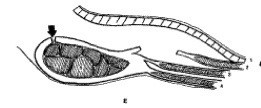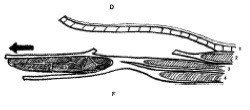Specializing in-
Abdominal Wall Reconstruction
WHAT IS Abbominal wall reconstruction?
Abdominal Wall reconstruction is a term to describe the rebuilding of the abdominal wall in order to fix a large hernia and restore the normal function the abdominal wall provides. We often think of our abdominal muscles simply as muscles that help us do sit-ups. The abdominal wall not only provides us with movement of our torso, but it holds out bowels inside the body, helps us to breath and cough properly, helps move our bowels and empty our bladder. When a large hernia develops and routine hernia techniques do not do the job, abdominal wall reconstruction may be necessary.
Patients with ventral hernia and loss of domain represent some of the most complex hernia a surgeon may face. Loss of domain is where 50% of the abdominal viscera reside outside the abdominal cavity. Emergency surgery with open abdomen management and morbid obesity with prior open abdominal surgery are the two most common reasons loss of domain develops. Restoring abdominal wall integrity and function via a hernia repair poses special consideration from a preoperative preparation and operative technique standpoint. Preoperative weight loss may decrease the intra-abdominal volume for the viscera to return at the time of the repair. Smoking cessation, wound care, exercise training, and diabetes management can reduce postoperative pulmonary and wound infections. In most cases, myofascial releases that lengthen the abdominal wall are necessary to optimized primary fascial closure of the abdomen. There are multiple surgical techniques that can be combined to enhance mesh implantation and restoration of abdominal wall function.
Most patients with loss of domain have a complicated surgical history. Obtaining and reviewing those notes will help understand the distorted surgical anatomy that will be encountered at the time the planned hernia repair. Details about the type of sutures placed, the mesh material type, location and size of implanted, and any prior facial component layers that may have been released are all important to know prior to surgery. Second is a physical exam. Generally, a functionally capacity and readiness for surgery can be assessed in an office exam. Focusing on the abdomen, matching the abdominal scars with the past surgical history can build a continuity to the case. Assessing for open wounds, broad scars, skin grafts, and stomas provides more data that will need to be factored into the surgical plan.
Our Hernia center surgeons have the skill and expertise to apply multiple techniques to best treat your complex hernia. These techniques include:
- Open Component Separation (Ramirez technique)
- Endoscopic Component Separation



